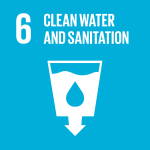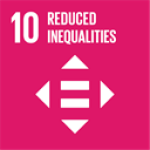
Photo: UNDP Sri Lanka
View the full photo essay by UNDP Sri Lanka here.
Desertification and drought issues have become increasingly prevalent in many countries around the world, resulting from a combination of natural processes and human activities. Asia, in particular, faces immense challenges due to its vast landmass and population density. The region is home to diverse landscapes and ecosystems that are susceptible to desertification and drought, ultimately endangering agriculture, water availability, and overall environmental stability.
Within Asia, Sri Lanka stands as a nation grappling with the adverse consequences of desertification and drought with a distinct Dry Zone, which covers approximately 70% of the country's land area, making it highly vulnerable to the devastating effects of desertification and water scarcity.
While the impact of desertification issues extends to the entire population of Sri Lanka, it is essential to recognize that there is a gendered dimension to this environmental challenge.
The theme of World Day to Combat Desertification and Drought 2023, "Her land, her rights", highlights this. Women's rights are intricately tied to the land they inhabit and depend on for sustenance. According to research conducted by the United Nations Convention to Combat Desertification (UNCCD), women often bear the brunt of environmental degradation and resource scarcity due to their traditional roles and responsibilities, which include managing household water, agriculture, and food security.
As desertification and drought intensify, women in these regions face increased workloads, reduced income opportunities, and limited access to education, healthcare, and decision-making processes.

BURDEN ON WOMEN
Research by the International Fund for Agricultural Development (IFAD) indicates that as water sources become scarcer and agriculture becomes increasingly challenging, women bear the burden of traveling longer distances to fetch water, jeopardizing their safety and limiting their time for other activities. Moreover, women's traditional reliance on rain-fed agriculture in the dry zone is severely impacted by erratic rainfall patterns, leading to decreased crop yields and economic instability.
To address the interconnected challenges of desertification, drought, and gender inequality, it is imperative to promote sustainable land management practices, enhance water resource management, and empower women in Sri Lanka's dry zone. By providing women with equitable access to resources, education, and economic opportunities, we can foster resilience and ensure their meaningful participation in decision-making processes concerning desertification and drought mitigation and adaptation strategies.
ADDRESSING THE ISSUE
In Sri Lanka's Dry Zone, the project 'Strengthening the Resilience of Smallholder Farmers in the Dry Zone to Climate Variability and Extreme Events' (known locally as the Climate Resilient Integrated Water Management Project, or CRIWMP) is furthering efforts to address desertification and drought. The seven-year project funded by the Green Climate Fund (GCF) and implemented by the Government of Sri Lanka together with the United Nations Development Programme (UNDP) aims to strengthen the resilience of smallholder farmers, particularly women, in the Dry Zone who are facing the impacts of climate change, such as rising temperatures, erratic rainfall, and extreme events.
The project invests in improving community irrigation systems, drinking water systems, and early warnings for flood response and water management, reaching over 770,500 direct and 1,179,800 indirect beneficiaries.

NEW LIFE TO AGRICULTURAL PURSUITS
Through its interventions, agriculture technology packages have been provided to over 459,000 farmers, ensuring equal representation of both men and women.
Notably, 7,152 women farmers, including widows, persons with disabilities, and youth, have embraced these climate-smart agriculture technologies, breathing new life into their agricultural pursuits.
Against the backdrop of fuel and input shortages triggered by the ongoing economic crisis in the country, extreme weather events, and the long-term impacts of the COVID-19 pandemic, these innovative solutions have proven indispensable. Moreover, the establishment of 7,489 climate-smart rural and urban home gardens has fortified nutrition and food security for countless households, with women primarily benefiting from the surplus income, which is directed towards family welfare and children's education.
These activities have significantly mitigated desertification and drought impacts in Sri Lanka's Dry Zone. Through agriculture technology packages, farmers now employ sustainable practices that optimize water usage and reduce soil erosion. Climate-smart rural and urban home gardens have conserved water resources and preserved soil moisture, serving as a buffer against prolonged dry spells.
These initiatives have improved food security, income generation, and built resilience in the face of desertification and drought challenges.

ADAPTING TO EVER-CHANGING CLIMATE PATTERNS
The project also has a focus on forecasting, to address erratic rainfall patterns by providing weather and agro advisories to approximately 459,000 farmers across 69 Agricultural Service Centres in river basins, which assists farmers in mitigating the effects of desertification and drought.
Through these advisories, farmers receive invaluable guidance for planning seasonal cultivation, managing crops, and optimizing harvesting techniques. This proactive approach empowers them to adapt to the ever-changing climate conditions more effectively. Strategic investments in social infrastructure for drinking water too, have not only eased the burden of household care for women but have also unlocked employment prospects.
As a result, an impressive 8,812 women are actively involved in managing activities related to 1,101 rural water supply schemes, including the establishment of seven transformative community water supply schemes. An additional 2,192 women have secured employment within these initiatives.
ENHANCING RESILIENCE
The revitalization of village irrigation systems by the project plays a significant role in mitigating the impacts of desertification and drought. By upgrading small-scale rainwater storage reservoirs and their accompanying watersheds, particularly across three crucial river basins, the resilience of these essential systems has been strengthened. The finalization of designs for 297 village irrigation systems in 2022 alone, along with the complete upgrade of 187 village irrigation systems during the reporting period, demonstrates the project's commitment. The seamless progress of rehabilitating an additional 81 village irrigation systems without hindering cultivation activities further supports the mitigation efforts against desertification and drought challenges in the Dry Zone.
These efforts have not only sustained agricultural livelihoods but also improved food security, generated employment, and enhanced the resilience of irrigation systems. Through such comprehensive actions, the project aims to create lasting livelihood improvement opportunities and ensure inclusive and equitable development in the face of environmental challenges.

HER LAND, HER RIGHTS
On this Desertification and Drought Day, the urgency of combating environmental degradation is in the spotlight.
The GCF-funded project recognizes the vital role of women in sustainable land management and their rights to access, use, and govern their land. By amplifying women's voices and advocating for inclusive solutions, women are empowered and are able to address their specific needs to combat desertification and drought through the project.
From climate-smart agriculture, to rainwater harvesting, and village irrigation system upgrades, the project is building a more sustainable and equitable future, promoting “her land, her rights” and thriving communities, while addressing environmental degradation.
Learn more about the project 'Strengthening the Resilience of Smallholder Farmers in the Dry Zone to Climate Variability and Extreme Events'







